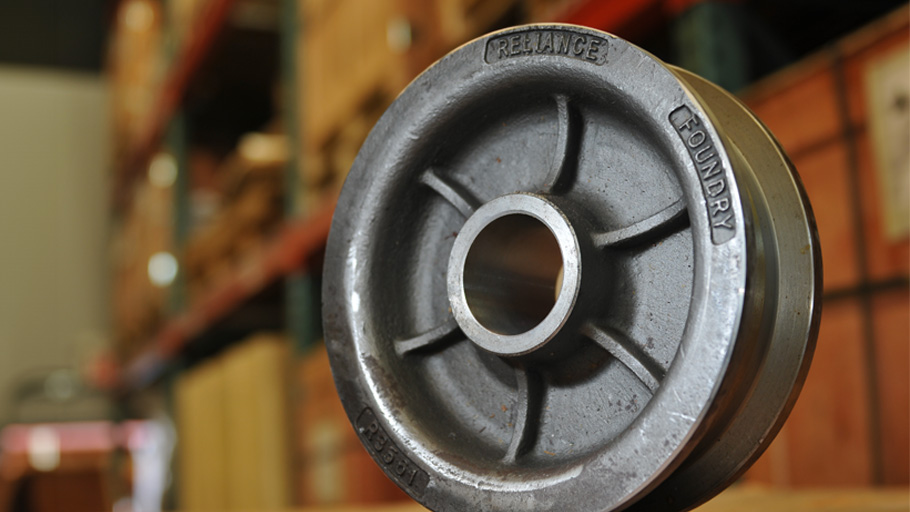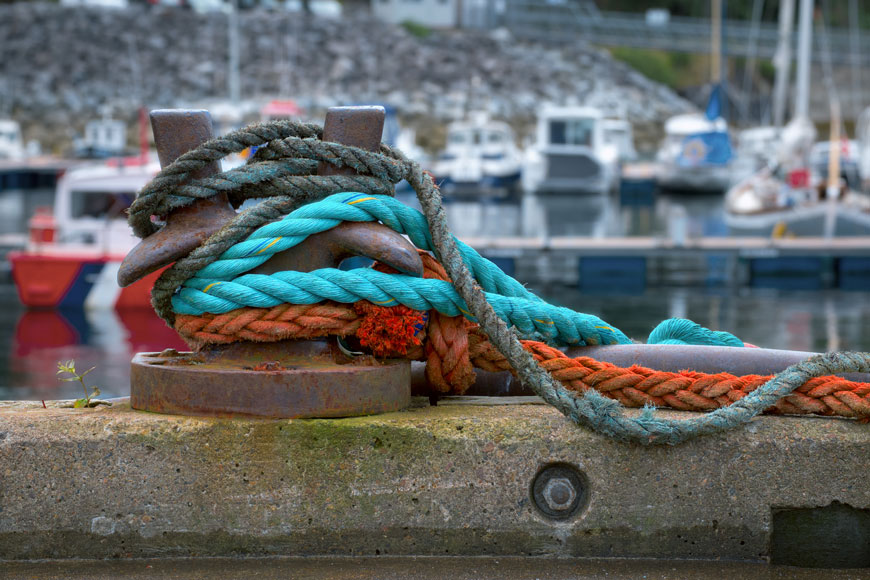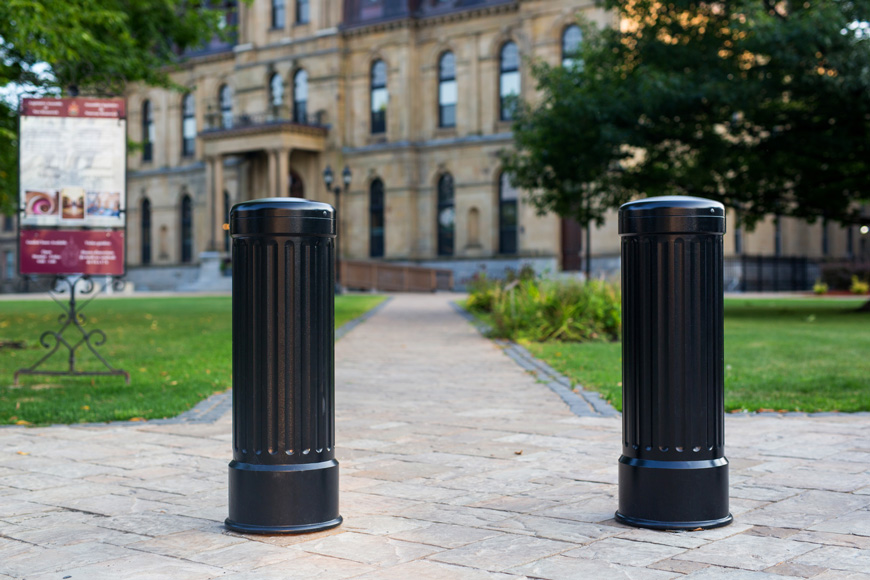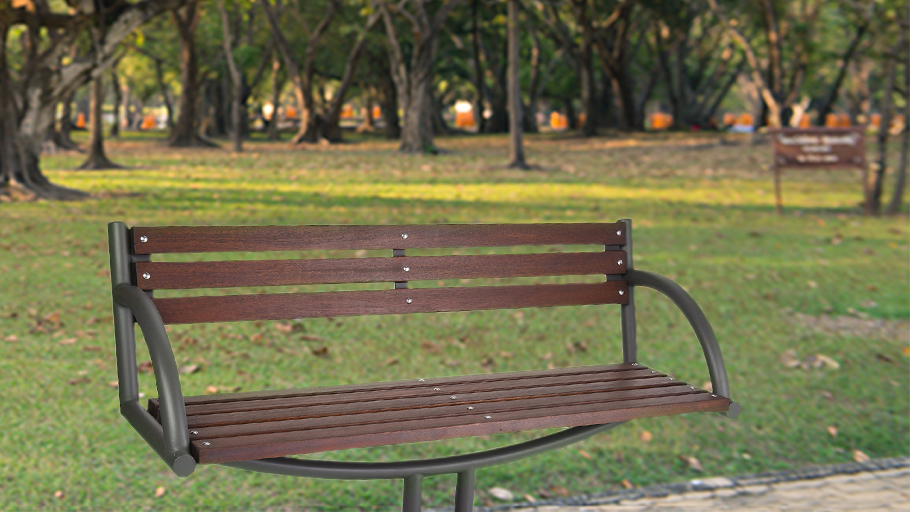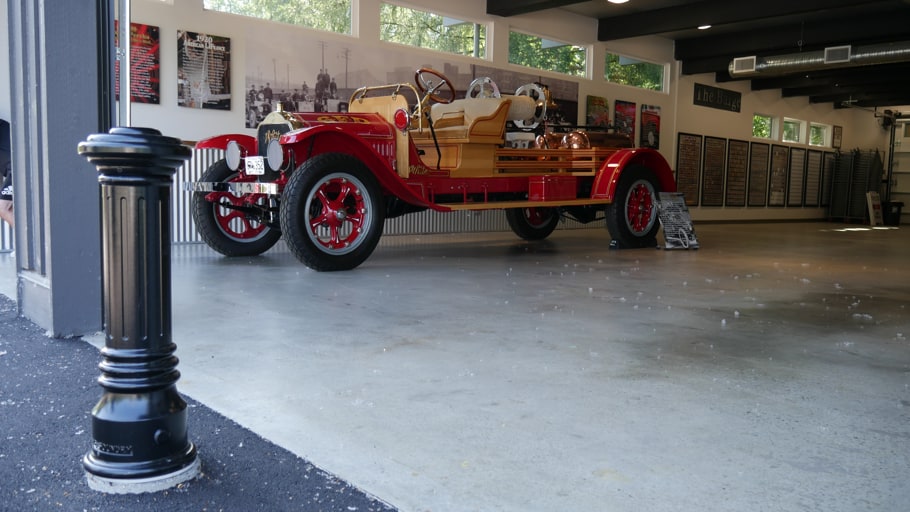A versatile metal, cast iron has many unique applications in the commercial and industrial world
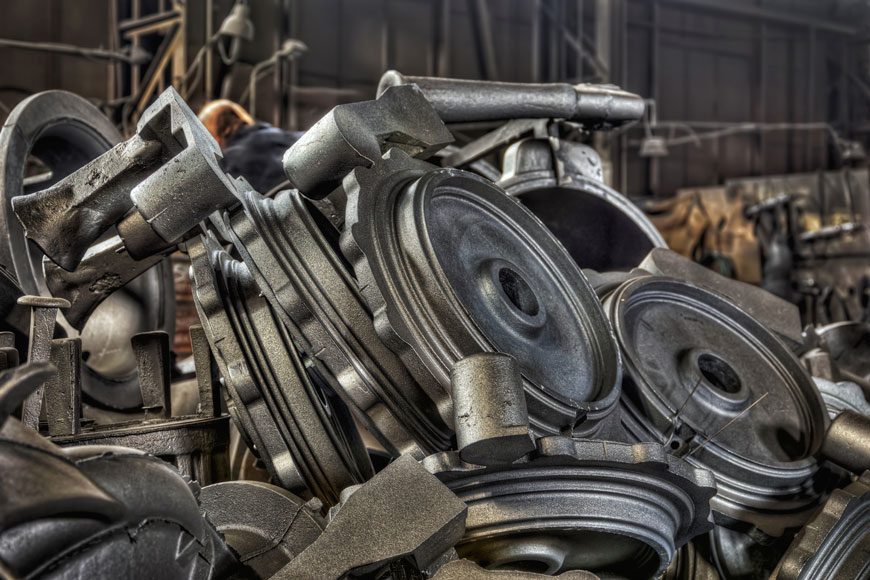
The presence of iron in everyday life began in about 1200 BCE, encompassing a wide range of uses from farming implements to weapons of war. Blacksmiths became a critical profession, working with iron to change its properties and shape the material into tools. Every village and town would have a blacksmith’s shop, where sickles, plowshares, nails, swords, candlestick holders, and more were produced.
The discovery of iron’s value led to what has become known as the Iron Age, due to the dominance of this material in social and military applications. Another milestone for metals would follow—the Industrial Revolution changed the way metals were produced and worked into products, including iron.
Types of iron
There are two major types of iron produced: wrought iron and cast iron. Within those, cast iron includes its own family of metals.
Wrought iron
The first type of iron produced and worked by blacksmiths was wrought iron. It is virtually pure elemental iron (Fe) that is heated in a furnace before being wrought (worked) with hammers on an anvil. Hammering iron expels most of the slag from the material and welds the iron particles together.
During the industrial revolution and the associated acceleration of construction activities, a new use for wrought iron was discovered. Its high tensile strength (resistance to breaking when under tension) made it ideal to use for beams in large construction projects such as bridges and high-rise buildings. However, the use of wrought iron for this purpose was largely abandoned in the early 20th century when steel products were developed with superior performance to iron for construction applications.
Wrought iron has become famous for decorative pieces. Churches of the 15th and 16th century contain fine wrought iron pieces produced by skilled artisans. In the modern world, railings, doors, and benches are still made from wrought iron as custom pieces.
Cast iron
Cast iron is produced by smelting iron-carbon alloys that have a carbon content greater than 2%. After smelting, the metal is poured into a mold. The primary difference in production between wrought iron and cast iron is that cast iron is not worked with hammers and tools. There are also differences in composition—cast iron contains 2–4% carbon and other alloys, and 1–3% of silicon, which improves the casting performance of the molten metal. Small amounts of manganese and some impurities like sulfur and phosphorous may also be present. Differences between wrought iron and cast iron can also be found in the details of chemical structure and physical properties.
Although both steel and cast iron contain traces of carbon and appear similar, there are significant differences between the two metals. Steel contains less than 2% carbon, which enables the final product to solidify in a single microcrystalline structure. The higher carbon content of cast iron means that it solidifies as a heterogeneous alloy, and therefore has more than one microcrystalline structure present in the material.
It is the combination of high carbon content, and the presence of silicon, that gives cast iron its excellent castability. Various types of cast irons are produced using different heat treatment and processing techniques, including gray iron, white iron, malleable iron, ductile iron, and compacted graphite iron.

Gray iron
Gray iron is characterized by the flake shape of the graphite molecules in the metal. When the metal is fractured, the break occurs along the graphite flakes, which gives it the gray color on the fractured metal’s surface. The name gray iron comes from this characteristic.
It is possible to control the size and matrix structure of the graphite flakes during production by adjusting the cooling rate and composition. Gray iron is not as ductile as other forms of cast iron and its tensile strength is also lower. However, it is a better thermal conductor and has a higher level of vibration damping. It has a damping capacity that is 20–25 times higher than steel and superior to all other cast irons. Gray iron is also easier to machine than other cast irons, and its wear resistance properties make it one of the highest volume cast iron products.
Our hardscape products are made of grey iron. Vibration damping and wear resistance are properties that make this the right material for many street applications. Raw grey iron also produces a patina that keeps it safe from destructive corrosion even outdoors.
White iron
With the right carbon content and a high cooling rate, carbon atoms combine with iron to form iron carbide. This means that there are little to no free graphite molecules in the solidified material. When white iron is sheared, the fractured face appears white due to the absence of graphite. The cementite microcrystalline structure is hard and brittle with a high compressive strength and good wear resistance. In certain specialized applications, it is desirable to have white iron on the surface of the product. This can be achieved by using a good conductor of heat to make part of the mold. This will draw heat out of the molten metal quickly from that specific area, while the rest of the casting cools at a slower rate.
One of the most popular grades of white iron is Ni-Hard Iron. The addition of chromium and nickel alloys gives this product excellent properties for low impact, sliding abrasion applications.
White irons and ni-hard irons fall under a classification of alloys referred to as ASTM A532; the “Standard Specification for Abrasion-Resistant Cast Irons”.
Malleable iron
White iron can be further processed into malleable iron through a process of heat treatment. An extended program of heating and cooling, results in the breakdown of the iron carbide molecules, releasing free graphite molecules into the iron. Different cooling rates, and the addition of alloys, produces a malleable iron with a microcrystalline structure.
Ductile iron (Nodular iron)
Ductile iron, or nodular iron, obtains its special properties through the addition of magnesium into the alloy. The presence of magnesium causes the graphite to form in a spheroid shape as opposed to the flakes of gray iron. Composition control is very important in the manufacturing process. Small amounts of impurities such as sulfur and oxygen react with the magnesium, affecting the shape of the graphite molecules. Different grades of ductile iron are formed by manipulating the microcrystalline structure around the graphite spheroid. This is achieved through the casting process, or through heat treatment, as a downstream processing step.
Because ductile iron deforms on impact, rather than shattering into shards, we use the material to make our cast iron bollards. Ductile iron’s impact profile makes it a good cast iron for bollards near vehicle traffic.
Compacted graphite iron
Compacted graphite iron has a graphite structure and associated properties that are a blend of gray and white iron. The microcrystalline structure is formed around blunt flakes of graphite which are interconnected. An alloy, such as titanium, is used to suppress the formation of spheroidal graphite. Compacted graphite iron has a higher tensile strength and improved ductility compared to gray iron. The microcrystalline structure and properties can be adjusted through heat treatment or the addition of other alloys.
Summary of cast iron compositions
A table developed by the Engineer’s Handbook shows the different composition ranges for the various types of cast iron:
Mechanical properties of cast iron
The mechanical properties of a material indicate how it responds under specific stresses, which helps to determine its suitability for different applications. Specifications are set by organizations such as the American Society for Testing and Materials (ASTM) so that users can purchase materials with confidence that they meet the requirements for their application. The most commonly used cast gray iron specification is ASTM A48.
In order to qualify cast products according to their specifications, a standard practice is to cast a test bar along with the engineered castings. The ASTM tests are then applied to this test bar and the results are used to qualify the entire batch of castings.
Specifications are also important when welding cast iron parts together. The weld must meet or exceed the mechanical properties of the material being welded together—otherwise, fractures and failures can occur.
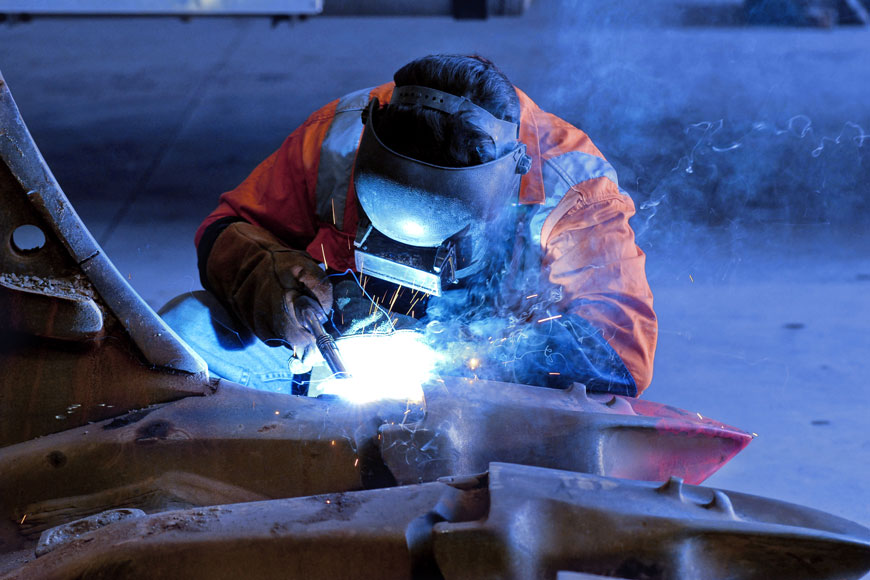
A few common mechanical properties for cast iron include:
- Hardness – material’s resistance to abrasion and indentation
- Toughness – material’s ability to absorb energy
- Ductility – material’s ability to deform without fracture
- Elasticity – material’s ability to return to its original dimensions after it has been deformed
- Malleability – material’s ability to deform under compression without rupturing
- Tensile strength – the greatest longitudinal stress a material can bear without tearing apart
- Fatigue strength – the highest stress that a material can withstand for a given number of cycles without breaking
This table summarizes some of the key mechanical properties for various grades of cast iron. For more information, see “Iron Alloys”, a great reference document from the American Foundry Society.
Common applications of cast iron
The various properties of different types of cast iron results in each type being suited for specific applications.
Gray iron applications
One of the key characteristics of gray iron is its ability to resist wear even when lubrication supply is limited (e.g. the upper cylinder walls in engine blocks). Gray iron is used to make engine blocks and cylinder heads, manifolds, gas burners, gear blanks, enclosures, and housings.
White iron applications
The chilling process used to make white iron results in a brittle material that is very resistant to wear and abrasions. For this reason, it is used to make mill linings, shot-blasting nozzles, railroad brake shoes, slurry pump housings, rolling mill rolls, and crushers.
Ni-Hard Iron is specifically used for mixer paddles, augers and dies, liner plates for ball mills, coal chutes, and wire guides for drawing wires.
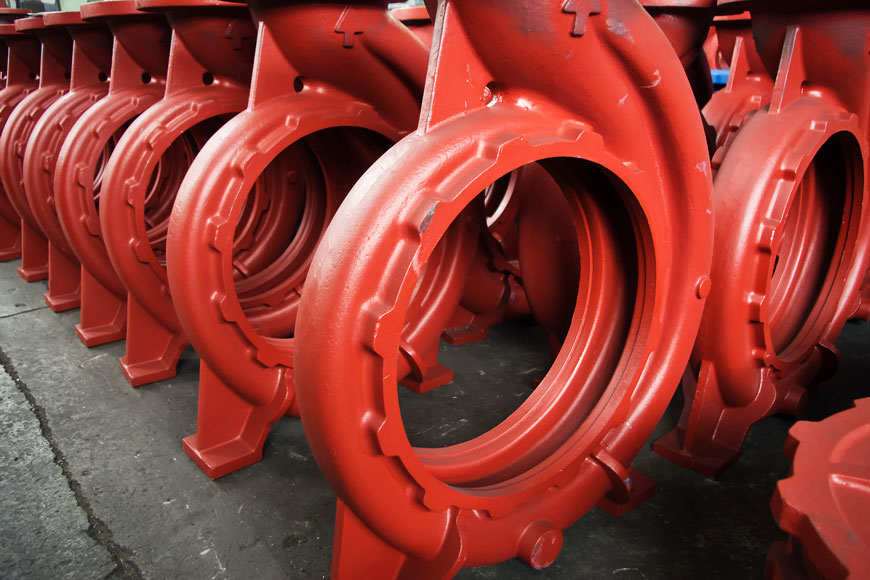
Ductile iron applications
Ductile iron itself can be broken down into different grades, each with their own property specifications and most suitable applications. It is easy to machine, has good fatigue and yield strength, while being wear resistant. Its most well-known feature, however, is ductility. Ductile iron can be used to make steering knuckles, plow shares, crankshafts, heavy duty gears, automotive and truck suspension components, hydraulic components, and automobile door hinges.
Malleable iron applications
Different grades of malleable iron correspond to different microcrystalline structures. Specific attributes that make malleable iron attractive are its ability to retain and store lubricants, the non-abrasive wear particles, and the porous surface which traps other abrasive debris. Malleable iron is used for heavy duty bearing surfaces, chains, sprockets, connecting rods, drive train and axle components, railroad rolling stock, and farm and construction machinery.
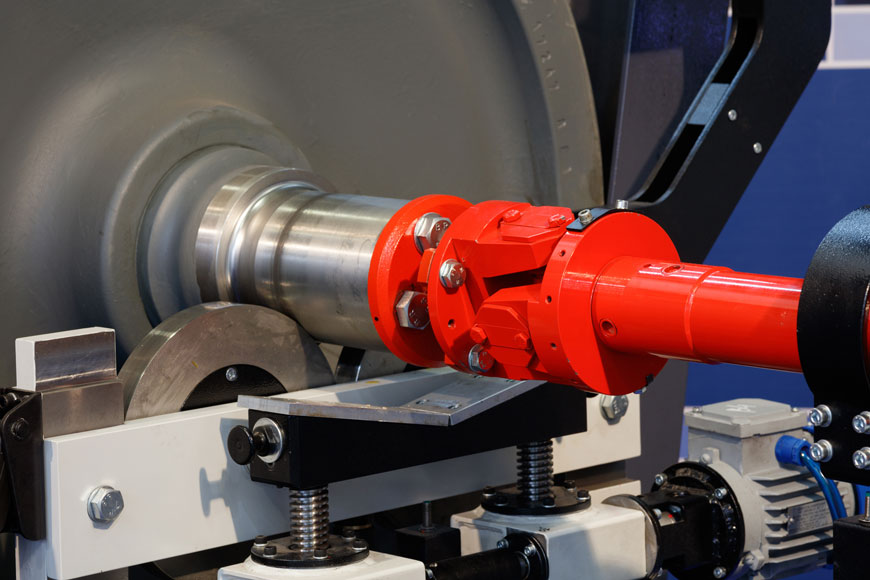
Compacted graphite iron applications
Compacted graphite iron is beginning to make its presence known in commercial applications. The combination of the properties of gray iron and white iron create a high strength and high thermal conductivity product—suitable for diesel engine blocks and frames, cylinder liners, brake discs for trains, exhaust manifolds, and gear plates in high pressure pumps.
Machining and finishing
The hardness properties of cast iron demand careful selection of machine tool materials. Coated carbides are effective in production machining environments, but newer materials are being developed continuously as technology improves.
Surface finishing of cast iron products varies greatly according to the use. A few common applications:
- Electroplating
- Hot-dipping
- Thermal spraying
- Diffusion coating
- Conversion coating
- Porcelain enameling
- Liquid organic coating
- Dry powder organic coating
Cast iron and the future
From its early use over 3,000 years ago, iron has remained an integral part of human society. Iron production has come a long way since the centuries of working iron by blacksmiths to the invention of cast iron in the industrial age.
Since then, wrought iron has become largely obsolete except for decorative uses. Contrastingly, cast iron is still progressing in terms of composition, microstructure, and mechanical properties—continuing to make its mark in the modern world.
For more information on metal castings, or to request a quote for a custom metal project, please contact us.



